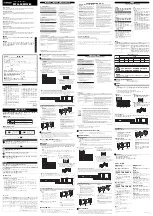
Instructor Manual
|
Ocean Diver
|
Adapting to the underwater world
Copyright © BSAC 2017
25
Features
• Comfortable close fit
The fit should be reasonably close but allow movement. Too loose and more
water will flush through the suit drawing more heat from the body and leading to
more rapid heat loss.
• One or two piece
Variation in styles means divers can choose between one or two-piece suits.
Some designs have an integrated hood.
• Semi-dry suits have seals to reduce flushing
The semi-dry suit uses the same principle, but they generally have thicker
neoprene than wet suits, and tighter seals at wrists and feet to reduce the water
ingress even more. Less water = semi dry.
• Hood and gloves
Divers can choose whether to wear a hood or not with these suits depending on
the water temperature. Hoods should be worn in cooler water to prevent heat
loss through the head. Gloves are another option in cooler water.
• Boots with strap fins
Shoe fins can be worn but where a diver chooses to wear neoprene boots to
protect or keep feet warmer, strap fins will be needed.
Care
• Wash in fresh water
Maintenance for wetsuits is to wash the suit with fresh water after every dive. A
mild disinfectant wash can also be used.
• Dry before storing
Make sure the suit is dry before storing, hanging it on a padded hanger is a
sensible approach.
Insulation – drysuits
The body warms the air within the suit providing insulation. Depending on the
suit fabric and the water temperature, clothing or undersuits need to be worn to
increase the insulation. To allow equalisation of air within the suit during a dive, air
is introduced via a direct feed from the regulator and excess air can be expelled via
a dump valve – both similar mechanisms to those on a BC.
Types
• Neoprene
Drysuits can be made from neoprene or crushed/compressed neoprene.



































